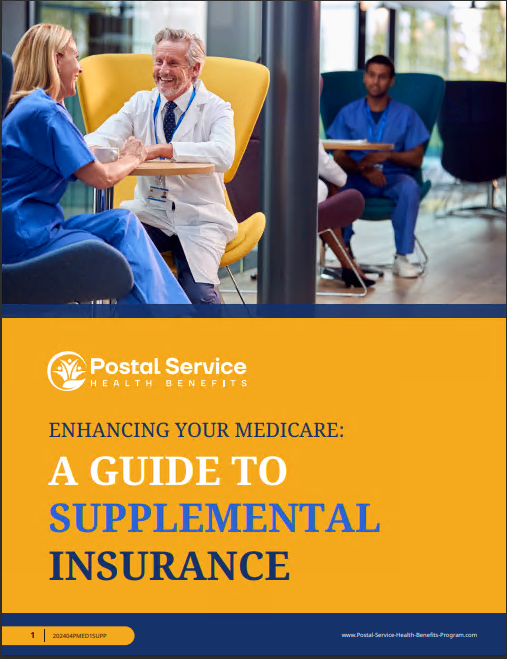Key Takeaways
-
Postal Service Health Benefits (PSHB) plans are designed to balance affordability with access to quality healthcare through structured copayments.
-
Understanding how copayments vary between primary care, specialists, and other services can help you better plan for your healthcare expenses.
Simplifying Healthcare Costs: What You Pay Matters
Navigating healthcare expenses can feel overwhelming, but the PSHB program simplifies it by offering a clear copayment structure. Whether you’re visiting your primary care physician for a routine check-up or seeing a specialist for a specific condition, your costs are predictable and manageable. This structure helps you focus on getting the care you need without worrying about hidden expenses. By providing transparency, the program builds trust, making it easier to plan ahead for any healthcare needs that may arise.
One of the most reassuring aspects of this setup is the ability to see where your money is going. You’re never left guessing about unexpected fees, allowing you to maintain control over your healthcare budget. This approach not only simplifies decision-making but also encourages regular engagement with healthcare providers, ultimately supporting better long-term health outcomes.
Why Copayments Are Key to Affordable Healthcare
Copayments are fixed amounts you pay for healthcare services at the time of your visit. This predictable expense model ensures you know upfront what your financial responsibilities are. By balancing affordability with shared responsibility, PSHB copayments reduce the financial burden of unexpected medical bills while encouraging regular and preventive care.
These payments also foster a sense of accountability. When you’re aware of a set amount tied to a service, you’re more likely to seek out necessary care while being mindful of its value. It’s a system designed to make sure you have access to the services you need without causing financial strain, whether for routine visits or specialized treatments.
Breaking Down PSHB Copayments
Primary Care Visits: Your First Line of Defense
Primary care visits are usually the most affordable under PSHB plans. You’ll pay a fixed copayment each time you see your primary care physician (PCP). This low-cost access incentivizes regular check-ups and early intervention, which can save money in the long run by addressing health issues before they escalate.
-
Cost Range: Typically $20-$40 per visit.
-
When to Use: Routine check-ups, minor illnesses, or health screenings.
-
Why It Matters: Regular visits to your PCP provide a foundation for ongoing health monitoring, catching potential problems early.
Specialists: Focused Expertise When You Need It
Specialist visits come with slightly higher copayments. These professionals bring expertise in specific medical fields, such as cardiology or dermatology, offering tailored treatments for more complex health concerns. While the copayment is higher than for primary care, it’s still structured to remain affordable.
-
Cost Range: Generally $30-$60 per visit.
-
When to Use: Chronic conditions, specialized diagnostics, or ongoing treatment plans.
-
Why It Matters: Specialists provide advanced care that may prevent complications or reduce the need for costlier treatments later.
Urgent Care and Emergency Services
Sometimes, health issues can’t wait. PSHB plans ensure that urgent care and emergency room visits are accessible, though these services have higher copayments to reflect the immediate nature of the care provided.
-
Urgent Care Copayments: Around $50-$75 per visit.
-
Emergency Room Copayments: Typically $100-$150 per visit.
-
When to Use: Non-life-threatening issues requiring quick attention (urgent care) or severe, potentially life-threatening conditions (emergency room).
-
Why It Matters: Timely care can be crucial for better recovery outcomes, even if it comes at a higher cost.
Inpatient and Outpatient Services: A Balance of Care and Cost
Hospital Stays and Surgeries
For inpatient hospital stays, you’ll pay a coinsurance rate alongside your deductible. This applies to extended stays, surgeries, and other significant medical procedures. Outpatient services, such as diagnostic imaging or minor surgeries, often have a fixed copayment or coinsurance.
-
Inpatient Coinsurance: 10%-30% of the service cost for in-network providers.
-
Outpatient Copayments: Fixed amounts ranging from $50-$300, depending on the service.
-
Why It Matters: These structured costs allow for better financial planning during major health events.
Preventive Care: No Extra Costs
Preventive care services, including annual physicals, immunizations, and screenings, are typically covered at no additional cost. This encourages you to stay proactive about your health.
-
Cost: Fully covered for in-network providers.
-
Examples: Vaccinations, mammograms, colonoscopies, and annual wellness exams.
-
Why It Matters: By eliminating cost barriers, preventive care reduces long-term healthcare expenses and improves outcomes.
Balancing In-Network and Out-of-Network Costs
PSHB plans prioritize in-network care to keep your expenses low. Visiting out-of-network providers usually results in higher copayments or coinsurance, which can significantly increase your overall costs.
-
In-Network Providers: Offer the lowest copayments and coinsurance rates.
-
Out-of-Network Providers: Expect to pay 40%-50% of service costs.
-
Why It Matters: Staying in-network ensures access to affordable care and prevents surprises on your medical bills.
Understanding the network of providers available through your PSHB plan can save you money and ensure you receive quality care. Using tools provided by your plan to locate in-network providers can further enhance your savings.
Prescription Drug Costs: Tiered for Savings
Medications under PSHB plans are categorized into tiers, with each tier having a different copayment. The structure ensures affordable access to essential drugs while managing costs for specialized or brand-name medications.
Common Tiers
-
Generic Drugs: Lowest copayments, often $10-$20 per prescription.
-
Preferred Brand-Name Drugs: Moderate copayments, typically $30-$50.
-
Non-Preferred Brand-Name Drugs: Higher copayments, ranging from $50-$100.
-
Specialty Drugs: Highest costs, often a percentage of the medication’s price.
Using preferred pharmacies within your plan’s network can further reduce prescription costs. Additionally, reviewing formulary updates each year helps you plan for any changes in drug availability or tier assignments.
Additional Services Covered by Copayments
Mental Health Services
PSHB plans recognize the importance of mental health. Copayments for therapy sessions and psychiatric care are designed to make these essential services accessible.
-
Therapy Visits: Usually $20-$40 per session.
-
Psychiatric Care: Specialist rates of $30-$60 per session.
-
Why It Matters: Access to affordable mental health care supports overall well-being and productivity.
Physical Therapy and Rehabilitation
If you’re recovering from an injury or surgery, physical therapy sessions are available at fixed copayment rates.
-
Cost: Typically $30-$50 per session.
-
Why It Matters: Regular therapy ensures a quicker, more effective recovery process.
Vision and Dental Services
Many PSHB plans include supplemental benefits for vision and dental care. Copayments for routine exams, corrective lenses, and basic dental services keep these critical health areas within reach.
-
Vision Exam Copayments: $10-$20 per visit.
-
Dental Cleaning Copayments: $20-$40 per visit.
-
Why It Matters: Maintaining good vision and dental health supports overall quality of life.
Planning Ahead for Your Healthcare Needs
Understanding PSHB copayment structures can help you plan your annual healthcare expenses more effectively. By utilizing preventive care, staying within your network, and considering telehealth options, you can minimize out-of-pocket costs and ensure consistent access to the care you need.
Additionally, scheduling appointments strategically and bundling services when possible can make the most of your plan’s benefits. For example, combining multiple screenings in a single visit may save time and effort while taking full advantage of covered services.
Making the Most of PSHB Benefits
Here are a few strategies to maximize your healthcare experience under the PSHB program:
-
Use Preventive Care Benefits: Take advantage of free screenings and check-ups.
-
Stay In-Network: Avoid higher costs by using in-network providers whenever possible.
-
Understand Your Plan’s Details: Familiarize yourself with copayment tiers for medications and services.
-
Consider Telehealth: Many plans offer virtual care options with lower copayments.
-
Review Your Annual Notice of Change (ANOC): Stay informed about updates to copayments, premiums, and coverage.
-
Utilize Online Resources: Many plans provide tools to manage your care and find in-network providers easily.
Affordable Care Designed for You
PSHB copayment structures make it easier to predict and manage your healthcare expenses while ensuring access to high-quality care. Whether you’re scheduling a routine visit or facing an unexpected medical issue, the program’s emphasis on affordability and transparency allows you to focus on your health without the stress of financial uncertainty. By planning ahead and utilizing the resources available, you can make the most of your benefits while staying financially secure.







